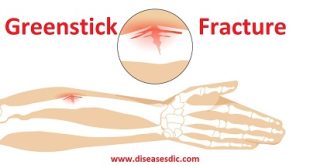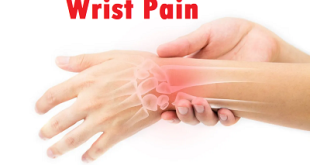Definition
Broken nose or nasal fracture is a fracture (crack or break) of the nasal bones. In most cases, there is also some damage to nearby nasal cartilage, particularly the nasal septum, the flexible partition that divides the left and right sides of the nose.
Because the nose has such a prominent and unprotected position in the center of the face, it is particularly vulnerable to impacts from accidents and violence. In mild fractures, the injury causes only some mild swelling and a brief nosebleed, so you may be unaware of the break unless your nose heals with a slight deformity.
Nasal fractures are more common in adults than in children. Children’s nasal bones are harder to fracture. Nasal fracture is fairly uncommon in young children because they don’t take part in the activities that can cause a nasal fracture. The risk increases with age. More boys than girls get nasal fractures. The nasal bone is one of the most commonly fractured bones of the face. The lower part of the nasal bone is thinner than the upper part and breaks more easily.
Broken nose
Types of Broken Nose
Some of the main types of nasal fractures are as follows:
Nasal fractures involving the nasal septum
Most nasal fracture involves the nasal septum. Based on the type of damage to the nasal septum, one can determine the treatment to be provided. If the nose is subjected to a force of weak impact, the nasal septum does not get damaged. However the when the impact is high, the nasal septum is damaged. The nasal passage is affected due to the fractures in the nasal septum. Treatment is based on the extent of damage to the nasal septum. When the nasal septum is damaged, the cartilaginous suppot of the nose is affected. The damage can be rectified with the cosmetic surgery.
Separation of the upper lateral cartilage
In this case the upper lateral cartilage is torn away. This type of injury may be noted in a car accident when the steering wheel hits the nose on impact. Computed tomography (CT) scan is better than plain X-ray in diagnosing this condition.
Lateral displacement of nasal fractures
This is the most common form of nasal fractures. The nasal bones get pushed and displaced when the nose suffers a blow from the side. There is also a displacement of the nasal septum.
Fracture of the anterior nasal spine
The anterior nasal spine is a small bony projection in the anterior midpoint of the nose. These fractures occur individually or in conjunction with other nasal fractures. They do not require any treatment if they occur without any other nasal fractures.
Fractures with a posterior depression
Following a nasal blow from the front, the nasal bones are pushed to the posterior. The nasal septum is also involved in this process. In addition, nasal fractures are commonly observed in patients who have undergone plastic surgery. The nasal fractures in such patients have been classified based on the site of the fracture such as
- First Type – at the higher level of the nasal bones
- Second Type – at the lower level of the nasal bones
- Third Type – fractures in the total nasal bone
Risk factors of Broken Nose
Any activity that increases your risk of a facial injury increases your risk of a broken nose. Such activities may include:
- Playing contact sports, such as football and hockey, especially without a helmet that has a face mask
- Engaging in a physical fight
- Riding a bicycle
- Lifting weights, especially if you don’t use a spotter
- Riding in a motor vehicle, especially without a seat belt
Broken Nose Causes
Causes of a broken nose are related to trauma to the nose or face. Common sources of trauma include the following:
- The most common cause of a broken nose are fights, accidents, and sports. A 2009 study of 236 patients with facial fractures incurred while playing sports found fractures of the the nasal bone to be the most common.
- Sports injuries
- Personal fights
- Motor vehicle accidents
- Falls
- In children, nasal fractures are most commonly due to falls.
Symptoms
Signs and symptoms of a broken nose may appear immediately or may take up to three days to develop.
Signs and symptoms may include:
- Pain or tenderness, especially when touching your nose
- Swelling of your nose and surrounding areas
- Bleeding
- Bruising around your nose or eyes
- Crooked or misshapen nose
- Difficulty breathing through your nose
- Discharge of mucus from your nose (rhinorrhoea)
- Feeling that your nasal passages are blocked
Complications
Complications or injuries related to a broken nose may include:
Deviated septum: A nose fracture may cause a deviated septum, a condition that occurs when the thin wall dividing the two sides of your nose (nasal septum) is displaced, narrowing your nasal passage. Medications, such as decongestants and antihistamines, can help you manage a deviated septum, but surgery is required to correct the condition.
Collection of blood: Sometimes, pools of clotted blood form in a broken nose, creating a condition called a septal hematoma. A septal hematoma can block one or both nostrils. Septal hematoma requires prompt surgical drainage to prevent cartilage damage.
Cartilage fracture: If your fracture is due to a forceful blow, such as from an automobile accident, you also may experience a cartilage fracture. If your injury is severe enough to warrant surgical treatment, the surgeon should address both your bone and cartilage injuries.
A broken nose deformity (left) as compared to normal (right)
Diagnosis and test
In the emergency department, a doctor will examine the head and neck.
- The doctor will inspect the outside and the inside of the nose, often using special instruments.
- Depending on the injuries, the doctor may perform a thorough exam.
- Doctors usually do not recommend X-ray films of the face or nose unless they suspect the results might alter the course of treatment.
Treatment and medications
If you have a minor fracture that hasn’t caused your nose to become crooked or otherwise misshapen, you may not need professional medical treatment. Your doctor may recommend simple self-care measures, such as using ice on the area and taking over-the-counter pain medications.
Fixing displacements and breaks
Your doctor may be able to realign your nose manually, or you may need surgery.
Manual realignment
If the break has displaced the bones and cartilage in your nose, your doctor may be able to manually realign them. This needs to be done within 14 days from when the fracture occurred, preferably sooner.
During this procedure, your doctor:
- Administers medication by injection or nasal spray to ease discomfort
- Opens your nostrils with a nasal speculum
- Uses special instruments to help realign your broken bones and cartilage
Your doctor will also splint your nose using packing in your nose and a dressing on the outside. Sometimes, an internal splint is also necessary for a short time. The packing usually needs to stay in for a week. You’ll also be given a prescription for antibiotics to prevent infection with the bacteria that may normally reside in your nose.
Surgery
Severe breaks, multiple breaks or breaks that have gone untreated for more than 14 days may not be candidates for manual realignment. In these cases, surgery to realign the bones and reshape your nose may be necessary.
If the break has damaged your nasal septum, causing obstruction or difficulty breathing, reconstructive surgery may be recommended. Surgery is typically performed on an outpatient basis.
Prevention of Broken Nose
You can take these precautions to reduce the risk of a broken nose:
- Wear shoes with good traction to prevent falls.
- During contact sports, wear protective face gear to prevent injuries to your nose.
- Wear a helmet when riding a bike, operating a motorcycle, skateboarding, skiing, or snowboarding.
- Wear your seatbelt while riding in a motor vehicle, and make sure children are properly restrained.
Home remedies
If you think you may have broken your nose, take these steps to reduce pain and swelling before seeing your doctor:
Act quickly: When the break first occurs, breathe through your mouth and lean forward to reduce the amount of blood that drains into your throat.
Use ice: Apply ice packs or cold compresses immediately after the injury, and then at least four times a day for the first 24 to 48 hours to reduce swelling. Keep the ice or cold compress on for 10 to 15 minutes at a time. Wrap the ice in a washcloth to prevent frostbite. Try not to apply too much pressure, which can cause additional pain or damage to your nose.
Relieve pain: Take over-the-counter pain relievers, such as acetaminophen (Tylenol, others), ibuprofen (Advil, Motrin IB, others) or naproxen sodium (Aleve, others), as necessary.
Keep your head up: Elevate your head especially when sleeping so as not to worsen swelling and throbbing.
Limit your activities: For the first two weeks after treatment, don’t play any sports. Avoid contact sports for at least six weeks after your injury.
 Diseases Treatments Dictionary This is complete solution to read all diseases treatments Which covers Prevention, Causes, Symptoms, Medical Terms, Drugs, Prescription, Natural Remedies with cures and Treatments. Most of the common diseases were listed in names, split with categories.
Diseases Treatments Dictionary This is complete solution to read all diseases treatments Which covers Prevention, Causes, Symptoms, Medical Terms, Drugs, Prescription, Natural Remedies with cures and Treatments. Most of the common diseases were listed in names, split with categories.








1. Precaution measures are not found.
2. Natural Reasons for this nose block ( Deviation)
3. How to avoid this permanently.
After a Broken Nose:
-Seek immediate medical help.
-Follow rest, ice, and elevation guidelines.
-Avoid activities that may harm the nose.
Natural Causes of Nose Block (Deviation):
-Deviation can be present from birth or develop over time.
-Other causes include nasal polyps, allergies, or chronic sinusitis.
Preventing Nasal Blockage:
-Consult an ENT specialist for diagnosis.
-Consider surgical options like septoplasty if needed.
-Manage underlying conditions and practice good nasal hygiene.